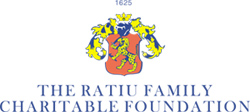UCL School of Slavonic and East European Studies, University College London, 7th Annual International Postgraduate Conference
Inclusion Exclusion
Saturday 18 February 12:00 – 1:30: Panel J2: Inclusion and Exclusion During World War II
Vanessa Voisin (Université Paris I Panthéon-Sorbonne): Inclusive and exclusive policies in the Kalinin province in the aftermath of World War II, 1943-1950’
Based upon an enlarged ongoing research on the social and political control in Kalinin province in 1945-1964, the paper focuses on the immediate aftermath of World War II. Following Amir Weiner’s thesis of the "Great Patriotic War" perceived by Soviet people as "the Armageddon of Revolution" (Weiner, 2002), we will examine how central and local agencies of the communist party and the state redefine their trustworthy citizens and their "inner ennemies".
Kalinin province was occupied by the Germans during various periods depending on the areas. Consequently, the Red Army liberating the last occupied territories in March 1943 found thoroughly dismantled structures of control in the districts which bore occupation during eighteen months. Reports from the propaganda departments of the local party comittees testify the difficulty of reorganizing party organisations and party agencies, while such problematic issues as repatriation of Soviet citizens forcefully sent in Germany and reintegration of demobilized soldiers reveal the unability of party and state organs to manage reconstruction, purification and reintegration of chocked populations.
While the Center (Central committee of the VKP(b), Council of people commissars, Party Control Commission of the Council of people commissars) imposes laws, orders and more globally policies designed to redefine the ideal Soviet citizen and exclude the dubious one, local autorities confront to the problem of enacting them. Close observation of the local reality shows an adjustment of policies to the concrete needs of economy and party reconstruction, while confrontation of local reports with central inspectors’ reports allow us of speaking of a "performative control" on the part of local organs.
The paper will give an insight of the lines and means of reintegration / exclusion in the wake of the War, while trying to confront intentions of the powers and concrete measures of enactment. It will focus on different processes of exclusion : filtration and control camps for returning citizens, epuration of the Party from assumed "collaborators" of the Germans, political pursuits against precise categories of population.
On the other hand, the inclusion/reintegration processes reveal themselves as deeply connected with the exclusive ones : the best examples being the policies toward "reemigrants" (people invited by Stalin to come back to the Mother-Patry) still perceived as dubious individuals, or toward entire peoples deported from their original territories in the wake of the war (Ingermanlandsy). These examples show the ambiguity of Soviet authorities towards their own citizens.
But more generally speaking, reintegration in the sacralized body of the victorious Soviet people, celebrated by Stalin in June 1945 during his famous toast to heroic ordinary people, implies complex procedures of distinction. Collective farmers are seen as individualistic while expected to save the collective productive resources during the war; soldiers’ families are supposed to be the most helped while suspected "passive" citizens are denied the right of emergency help. These procedures don’t act in an empty place : long-termed policies of exclusion, set in motion at least since the 1930’s, constitute the background of the new selective identity. For example, the kolkhoze chairman favorizing the survival of his collective farmers at the expense of state deliveries is still pursued on a penal ground.
The paper proposes to examine these new processes of exclusion and inclusion and to integrate them in the Soviet past policies of this type. It will try to show how a new pregnant myth, the myth of war, gets constructed at the expense of stigmatised groups of population and becomes a new axis of Soviet culture.




